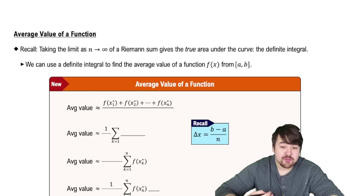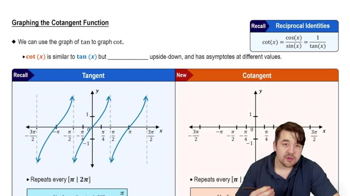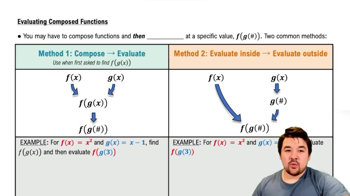Using the Sandwich Theorem
If √(5 −2x²) ≤ f(x) ≤ √(5−x²) for −1 ≤ x ≤ 1, find limx→0 f(x).
 Verified step by step guidance
Verified step by step guidance Verified video answer for a similar problem:
Verified video answer for a similar problem:



 6:47m
6:47mMaster Finding Limits Numerically and Graphically with a bite sized video explanation from Patrick
Start learning